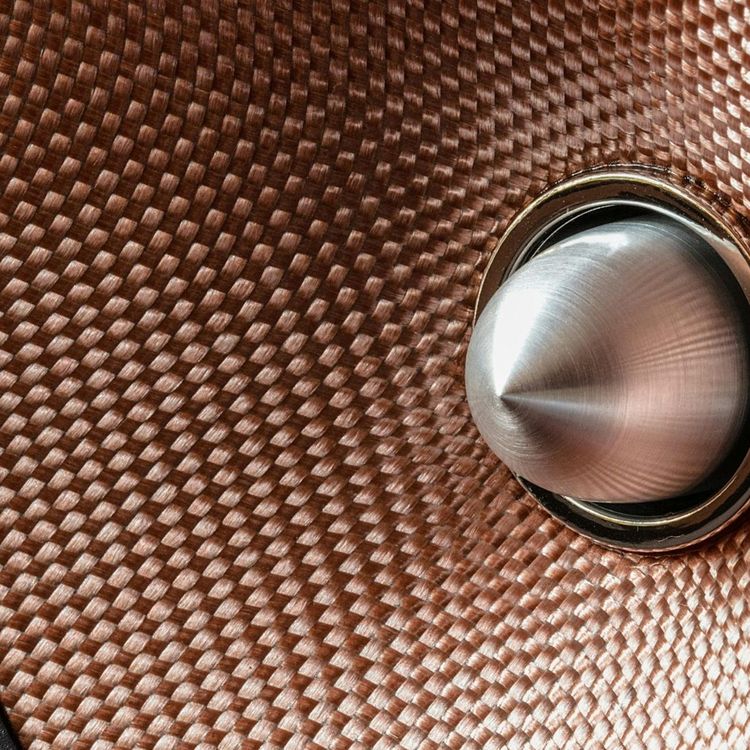History of the Roland 909 in 10 Tracks
Roland released the TR-909 in 1983 as a heavy-duty, programmable drum machine, a more realistic-sounding successor to their TR-808 and TR-606, which came out a few years before. While their TR-808 (released in 1980) had a fat, artificial, electronic sound, the "Transistor Rhythm" -909 was more thumping, with a tight, punchy kick drum, bright snares, and full, metallic-sounding hats.
It used analog circuitry to create all the sounds, except for the hi-hats, crash, and ride, which were samples. It was Roland's first use of sampled sounds in a drum machine, designed to compete with the sample-based LinnDrum and Oberheim DMX, which were the drum machines of choice for high-end studios at the time.
The TR-909 became one of the most-used instruments in electronic music, first for house, then for techno, where it did as much as any other piece of technology to define the sound. These days, if it's a pounding 4x4 beat, it's probably a TR-909 (or more likely a sample of a TR-909 or one of the 909 clones you can pick up – such as Roland's TR-09 or Behringer's RD-09).
Mr Fingers – "Can You Feel It" (1986)
Released on Trax Records in 1986, this seminal cut from Chicago producer Larry Heard has never really gone away. All the drums are from a TR-909, but it's that ride cymbal that starts up after the first eight bars that's so distinctive. Add to that the clap that kicks in four bars later, and you're in deep house heaven.
Inner City – "Good Life" (1988)
Kevin Saunderson is best known for being one of the originators of techno, alongside his two high school friends, Derrick May and Juan Atkins. But in the late '80s, he had a string of enormous house hits with vocalist Paris Grey under the name Inner City. This was the biggest hit of all and comes with a delightfully cheesy video shot in London. Check the lovely, disjointed 909 snare rolls that lead into the chorus.
Gene Hunt – "Modevation Process" (1994)
Chicago DJ Gene Hunt released this acid workout on Saskia Slegers' Djax-Up-Beats in 1994. Ever wondered what a 909 sounds like through a shitty guitar distortion pedal? Here's your answer. The stuttering closed hi-hat, and the enormous clap are enough to shred your speakers.
Drexciya – "The Countdown Has Begun" (1994)
Released on Detroit's Underground Resistance in 1994, this is dark, dystopian electro made with a TR-909. The pitched up kick drum
(the 909 kick has tune, decay, and attack knobs), gives it that abrupt punch. The double-timed snares on the rolls mean the track was probably written via MIDI rather than the 909's internal sequencer. The TR-909 was Roland's second MIDI-enabled drum machine, and you can trigger individual drum sounds from a sequencer or sync its patterns.
Jeff Mills – "Untitled A2" (1998)
The Wizard of techno, Jeff Mill's career is an ode to the TR-909. The Roland drum machine drives almost every release on his Axis and Purpose Maker labels. He is known for dragging a TR-909 into the club to play it live over the top of his DJ sets. In 1998 he put out an EP of live recordings made at the Rex Club in Paris of him playing a TR-909. In this track, you hear him improvising on a 909 while he plays an Axis release underneath. Drool over those 909 toms.
Peaches – "Fuck the Pain Away" (2000)
This sex-positive anthem from Canadian artist Peaches remains her biggest track. The TR-909 is front and center throughout. Check the rolling 909 crashes that underpin the chorus. Fun fact: Peaches never recorded this track in a studio. The version we all know was recorded onto a cassette by the sound engineer at one of her live gigs. He gave it to her after the performance, and she put it on her second album, hence the hiss and grit of its sound.
Bryan Zentz – "D-Clash" (2003)
Another piece of classic techno made on TR-909, Bryan Zentz's "D-Clash," came out on Carl Cox's Intech records and was a huge club hit. If you can make them out underneath the wall of bright metallic rides, you can hear the TR-909's shuffle feature on the hi-hats – it's one of the most used and loved features on the 909.
Shit Robot – "Simple Things (Work It Out)" (2009)
This acidic, vocal house cut from the Irish producer Shit Robot was released originally on James Murphy's DFA Records before coming out on Shit Robot's first album, From the Cradle to the Rave. Check the cheeky 909 woodblock that cuts in and out of the track, evoking the Chicago house sound of the '80s. The rest of the drums are pure TR-909, too, with a slow flange added to the hi-hats to give them a soaring metallic effect.
Skatebård – “AGFACHROME RSXII” (2016)
This lovely piece of deep house reminds us that the TR-909 sound is utterly timeless. Norwegian producer Bård Aasen Lødemel is behind the Digitalo Enterprises inprint, but he put this out on Otto Kraanen’s label Bordello A Parigi. Its simple hook and straightforward TR-909 drifts woozily on for almost eight minutes and never gets tired.
Peggy Gou – "I Go" (2021)
Proof that the 909 sounds as good today as it did 40 years ago, Peggy Gou's latest release is a straightforward pop-house banger driven by her soft, melodic vocals and a classic TR-909 pattern. I love those bright, hissy crashes that mark the track's transitions and the sharp, snappy claps near the start. It sounds like Gou used a TR-909 clone (like the TR-09) because of the pitched-up woodblock – something the TR-09 can do, but the original can't. Whatever – it sounds great.
















